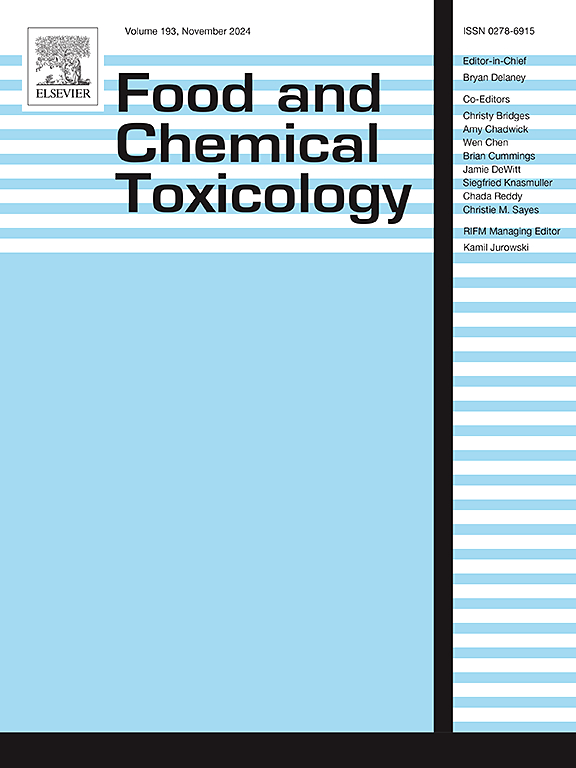Theaflavin alleviates cisplatin-induced nephrotoxicity: Targeting SIRT1/p53/FOXO3a/Nrf2 signaling and the NF-kB inflammatory cascade
IF 3.9
3区 医学
Q2 FOOD SCIENCE & TECHNOLOGY
引用次数: 0
Abstract
Cisplatin is a widely used chemotherapeutic agent. Nevertheless, a significant fraction of cisplatin-treated patients develops nephrotoxicity which limits cisplatin therapeutic implementation. The current work was devoted to investigate the potential nephroprotective impact of theaflavin against the cisplatin-induced nephrotoxicity using male Wistar rats as a mammalian model. The results indicated that theaflavin significantly improved the renal histopathological picture and glomerular filtration rate, along with reduced renal injury marker KIM-1, urinary albumin/creatinine ratio, serum creatinine, and urea. Mechanistically, theaflavin upregulated protein level of SIRT1 and downregulated the acetylated forms of the inflammatory transcription factor (TF) NF-kB, the antioxidant TF FOXO3a, and the pro-apoptotic TF p53 in the cisplatin-treated rats. Additionally, it upregulated the antioxidant TF Nrf2. In the same context, it suppressed the inflammatory responses, oxidative stress, and apoptosis. NF-kB nuclear translocation and levels of its responsive gene products IL-6 and TNF-α were suppressed. Lipids and DNA oxidation were reduced, and level of the antioxidant GSH and activity of the antioxidant enzymes SOD, GPx, and CAT were increased. The apoptotic markers caspase-3, BAX, and Bcl2 were modulated. Collectively, these findings highlight the nephroprotective competency of theaflavin against cisplatin-induced nephrotoxicity and underscore modulations of SIRT1, p53, FOXO3a, Nrf2, and NF-kB as potential targets.

求助全文
约1分钟内获得全文
求助全文
来源期刊

Food and Chemical Toxicology
工程技术-毒理学
CiteScore
10.90
自引率
4.70%
发文量
651
审稿时长
31 days
期刊介绍:
Food and Chemical Toxicology (FCT), an internationally renowned journal, that publishes original research articles and reviews on toxic effects, in animals and humans, of natural or synthetic chemicals occurring in the human environment with particular emphasis on food, drugs, and chemicals, including agricultural and industrial safety, and consumer product safety. Areas such as safety evaluation of novel foods and ingredients, biotechnologically-derived products, and nanomaterials are included in the scope of the journal. FCT also encourages submission of papers on inter-relationships between nutrition and toxicology and on in vitro techniques, particularly those fostering the 3 Rs.
The principal aim of the journal is to publish high impact, scholarly work and to serve as a multidisciplinary forum for research in toxicology. Papers submitted will be judged on the basis of scientific originality and contribution to the field, quality and subject matter. Studies should address at least one of the following:
-Adverse physiological/biochemical, or pathological changes induced by specific defined substances
-New techniques for assessing potential toxicity, including molecular biology
-Mechanisms underlying toxic phenomena
-Toxicological examinations of specific chemicals or consumer products, both those showing adverse effects and those demonstrating safety, that meet current standards of scientific acceptability.
Authors must clearly and briefly identify what novel toxic effect (s) or toxic mechanism (s) of the chemical are being reported and what their significance is in the abstract. Furthermore, sufficient doses should be included in order to provide information on NOAEL/LOAEL values.
 求助内容:
求助内容: 应助结果提醒方式:
应助结果提醒方式:


